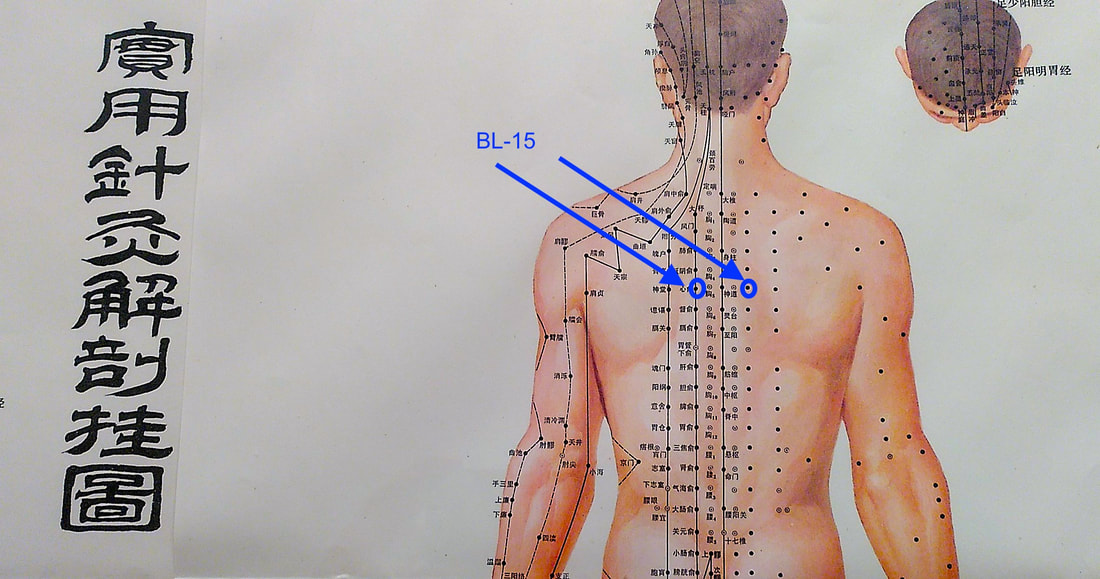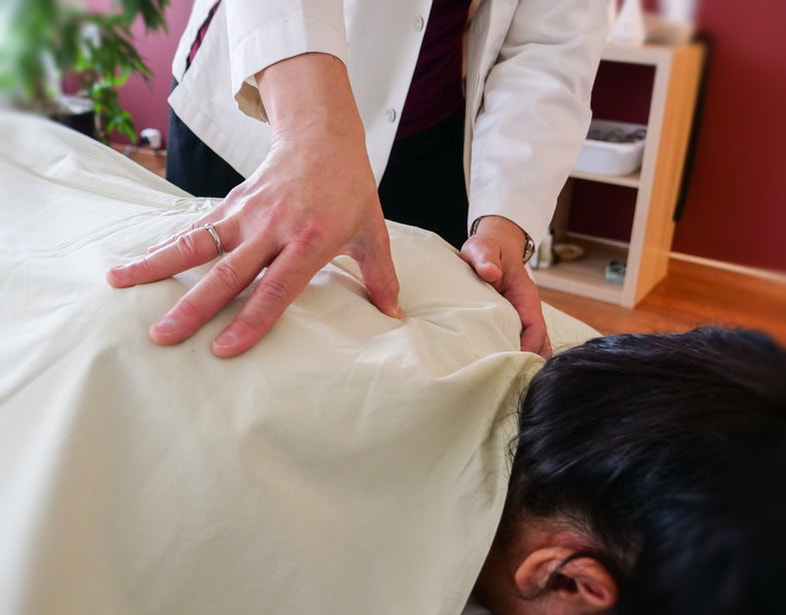
I never really thought about when my journey to becoming a healer began until a few years ago. As a child, my mom would get us kids to give her leg massages in the evening, after a long day standing. I guess, it was her way of keeping in Touch and connection to us, as we in my Asian family didn't continue getting hugs when we reached school-age. Often during these moments of Touch, we would share about my day in school or stories from my mom about her childhood. I can now see that the seed of becoming a healer was being planted then when I was about 7 years old; that I would one day choose the path of Touch as my livelihood. Of course, like in gardening, one can plant many seeds but only some will come to fruition, with the right amount of nourishment and environment conducive to growth for that particular seed. As I began studying Chinese Medicine over 20 years ago, I became aware how Touch came very naturally to my hands. What I had felt in my hands and my being as a younger person, became illuminated through the view of Chinese Medicine, Acupuncture, Qi Gong and Tui Na hand techniques.
Many methods of massage exist all over the world, as I stated in my last blogpost. I imagine that different traditions imparted this knowledge very differently: orally, by physical demonstration and/or by writing and drawing. As historians look for clues as to the when massage began to exist in human societies, they are finding images from Egypt and writings in Mesopotamia around 2000 BCE, writings around 700 BCE in China and Greece and 500 BCE India and Thailand. These culture where we have found physical evidence of massage or the laying-of-hands, are cultures that recorded information in the form of writing and drawing early on, as such we have evidence of massage's existence. However, I am confident that humans already knew of massage and healing with hands much earlier on than the physical evidence shows. We, in the Chinese tradition, are lucky to have written records passed down to us in an unbroken line till this day.
A few posts back, I began introducing Acupuncture Points, which I would like to continue doing. There are 303 Acu-Points on the Regular Organ Meridians; this is not including Acu-Points on the Extraordinary Meridians of the Ren and Du Mai, or the Extra-Points such as the Hua-Tuo-Jia-Ji Points. If we add these together, there would be 390 Acu-Points. Yet there would still be even more Extra Acu-Points that don't lie on a particular channel but are used symptomatically. But let us just say that there are 390 Acu-Points on the body and of these, there are 90 that lie on the back, on and along the spine, as well as the shoulders blades. This accounts for almost a quarter of the Acu-Points on the whole body. This is not a coincidence. The back of the body is what we in Chinese Medicine describe as the Yang aspect of the body. The longest Yang channel, the Urinary Bladder with 67 Acu-Points, has most of its Acu-Points on the posterior body. Many of these Acu-Points have direct connections to internal organs, as such can directly influence the state of these organs. For instance, BL-15 心俞 Xīn Shū, translated as Heart Transporter, treats issues with the Heart organ such as heart and chest pain, palpitations and arrhythmia. Interestingly when we look at how Western anatomy locates the Heart organ, at the level of the 5th and the 6th rib on the left side of the body, it correlates with the Chinese Medical location of BL-15, at the level below the 5th vertebra. For Chinese Medicine, the Heart also houses the Mind; when we say mind, we refer to the Spirit and the emotions. Some of the other indications for this Acu-Point are also poor memory, anxiety, disorientation, mania-depression and insomnia. As one can observe, this is an important point. Now imagine 88 other Acu-Points like this on the back, connecting to almost all the main internal organs like the Lung, Liver and Kidneys. Then, we realize that the back is a very crucial aspect of the body. In treating these points on the back externally, we can affect the body internally.
Acu-Points can be utilized with different methods in Chinese Medicine. An Acu-Point like BL-15 can be stimulated by metal in the form of Acupuncture needles, by plant and flame with Moxibustion, by external vacuum pressure with glass Cupping, friction with a ceramic spoon with Gua Sha and by hand with Tuī Ná-Àn Mó. My view is that the most versatile and most needed of all methods in our times is the touch of the hand. It is the most basic of all methods, that if a practitioner did not have the ability to touch with the hand, in my opinion, the other methods would be less effective. It is for me like my mom used to say, when we grumbled about not having cutlery to eat with when we were out and about, "Hands were made before spoons." If the skill of the hand is not present, then any tool that is held in the hand would not be able to compensate for the lack of skill. Tuī means to push, Ná is to grasp, Àn is to press and Mó is to rub in circular motion. So, the name for the Chinese system of massage is after 4 techniques that are used in treatment. There are obviously many more hand techniques in the massage. Tuī Ná-Àn Mó can be very vigorous and forceful, resembling chiropractic manipulation; which would make it more a Yang style Tui Na. But it can also be gentle, subtle and mild, sometimes no more than just laying-of-hands on a body area or finger pressure on some Acu-Point; which would be a Yin Style Tui Na. This depends on the practitioner and the needs of the patient. Whether Yin or Yang, the goal of the treatment is to affect the body-mind as a whole in a beneficial way.
Very often I have found in my practice of Tui Na that I tend to massage the back, stimulating the Acu-Points, like BL-15 to affect the whole body and their internal organs. In the process of doing that the muscle and fasciae tension from daily life can be released as well as other acute issues like pain resolved, allowing free flow of Qi and Blood through the body. Tui Na doesn't just provide symptomatic relief but deep release of blockages as well as strengthening of the whole body. Like in Acupuncture with needles, each Acu-Point can be stimulated with the hand. What has come to my awareness is that new scientific research is showing why we need or desire our backs to be massaged. Professor Francis McGlone, a neuroscientist, has been researching how a nerve fiber called C-tactile afferent, which responds to gentle touch that activates the area of the brain for positive feelings, is abound on our backs compared to any other area of the body. He hypothesizes that having more C-tactile afferent fibers on our backs has to do with our evolutionary need for social-bonding, as we can't really reach our own backs in order to massage it, but someone else can. Thus, strengthens our social bonds to each other. Professor McGlone's findings fascinates me, as it explains to me what the tradition of medicine I chose to practice is doing from another perspective. The ancient Chinese saw Acu-Points on the back and the current Western science sees C-tactile afferent. Whatever it is, we, as individual human beings, feel it and sense how it affects our lives. In Touch, we bond. Through bonding, we create relationships. In relationships, we find connection. Thus, enabling healing.
Image Tui Na by Okapi
Image Back Acu-Points by Elaine


 RSS Feed
RSS Feed